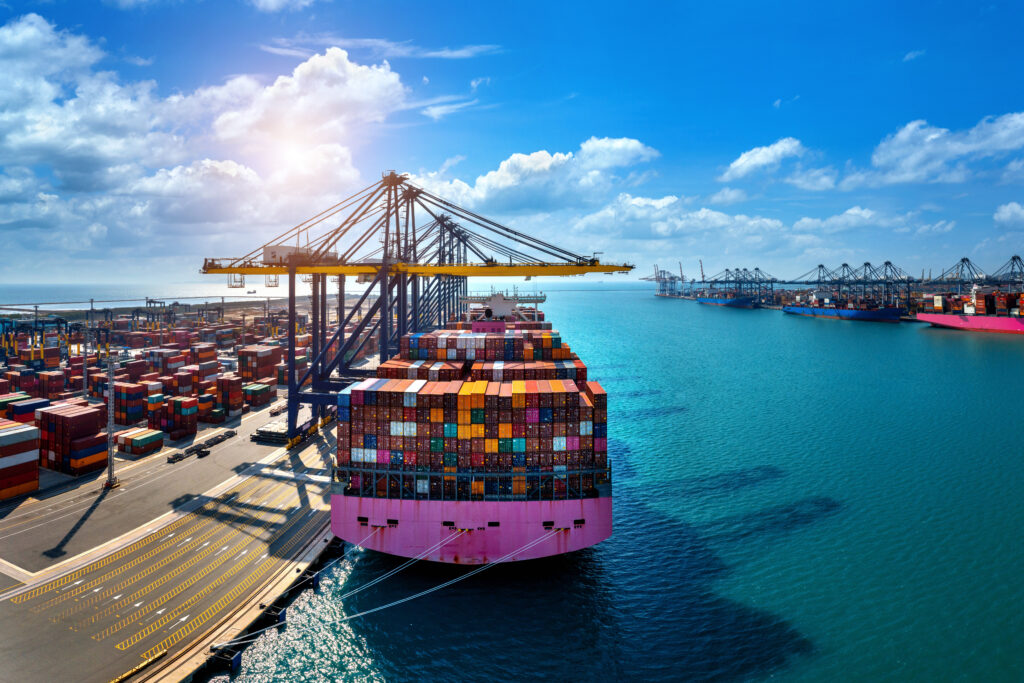Supply chain companies constantly search for ways to reduce costs and optimize operational efficiency. The global trade industry, particularly, is growing every day with high customer expectations. Hence, many companies in the sector are taking advantage of using foreign trade zones (FTZ).
The demand for foreign trade zones is evident in the solar manufacturing market in the USA. As the industry becomes more saturated, notable solar companies like JA Solar, KORE Power, and Trina Solar have sought approval to operate in FTZs, aiming to capitalize on its benefits to maintain competitiveness and viability.
Foreign Trade Zones (FTZs) are designated areas near U.S. ports of entry where importers and exporters can move goods with minimal customs charges, taxes, or fees. Companies operating within an FTZ are considered outside the U.S. for duty purposes, a measure initially designed to help American businesses stay competitive globally.
FTZs can help businesses achieve financial savings in various ways. By strategically utilizing FTZs, companies can improve their supply chains, simplify logistics, gain better control over inventory, reduce regulatory difficulties, and benefit from tax incentives.
How Foreign Trade Zones Work
Foreign trade zones (FTZs) are sites with specific designations within 60 miles of a U.S. port of entry. They are accessible to both public and private entities that may use FTZs. FTZs allow goods to be stored without the immediate imposition of customs duties or value-added taxes.
Typically, foreign cargo must clear customs and incur associated charges upon arrival in the U.S., which can be a significant financial burden for importers, manufacturers, and distributors. By utilizing FTZs, companies can defer or reduce these tariffs and taxes, thereby enhancing their cost-efficiency in international trade. This financial relief supports U.S.-based businesses in maintaining competitiveness, generating employment, and encouraging capital investment.
FTZs are governed and supervised by US Customs and Border Protection, a division of the US Homeland Security Council. FTZs are on US soil even if considered outside the US Customs territory. Because of this, all applicable federal, state, and local laws and regulations apply to goods and activities in FTZs. Articles that violate copyright, trademark, or patent rights are not permitted admittance, nor are articles prohibited by law. There are also rules regarding animal quarantine. US Customs laws governing the entry of goods into Customs territory and the payment of duty on those items don’t apply to these products if they are in an FTZ.
Foreign trade zones are divided into two classifications: general and special purpose.
General Purpose
Frequent sizable warehouses or industrial parks are perfect for businesses that store finished goods, machinery, supplies, or other items. A company’s specific storage requirements are considered while leasing space, which can be used continuously or on an as-needed basis.
Special Purpose
Also known as “Subzones,” the special purpose is given to specific businesses, such as manufacturing factories, oil refineries, and distribution centers, whose requirements can’t be met by general-purpose FTZs. Although any company can request its facilities designated as a subzone FTZ, the corporation is liable for all costs. These include building expenses, site upkeep, security, etc.—so a subzone designation is typically only financially advantageous for larger companies.

Five Ways Foreign Trade Zones Help Your Business
Utilizing foreign trade zones allows importers to adapt to changing consumer demand, purchasing patterns, and trade policy changes. The flexibility that an FTZ offers assists in maintaining some amount of control during periods of market instability.
1. Customs Consolidation
Companies can import shipments into the FTZ and be admitted into US Commerce for one week. They can combine these into weekly “consolidated” customs entries, saving you from paying processing fees. There’s less paperwork and expenses, which results in more significant savings and a more extensive bottom line.
Companies can also deliver imports directly to the zone with U.S. Customs’ approval. Businesses may also ask for authorization to remove and apply Customs seals. Only one entry must be made for entries and exports over seven days.
2. Deferred and Reduced Customs Duties
Importers can arrange for their products to be delivered to their designated foreign trade zones upon arrival in the U.S. You can assemble, test, or destroy them without paying customs taxes. Before their goods are sold or depart the FTZ to enter the U.S., importers are not required to pay tariffs.
Companies may also permanently hold imported goods in FTZ warehouses, enabling them to postpone paying customs charges. You may also pay in installments while keeping merchandise nearby and accessible.
For instance, a clothing company might import several containers’ worth of goods, but they would only bring in enough for a month’s shelf space. That company would have to pay duties on the items when they are withdrawn from the zone and brought into the US. This way, they can avoid paying the entire duty on everything when they arrive.
FTZs are advantageous for healthcare companies. The goods stored there do not need immediate or prior FDA approval. Businesses can hold unapproved items in preparation for approval, which can be delivered right after receiving FDA permission.
3. Merchandise Reclassification
Raw materials can be assembled or configured within an FTZ after arrival, resulting in a new tariff classification with a lower tax rate upon entry.
For example, a computer company might import hundreds of components to build a laptop. The producer can import the parts to an FTZ, where workers can assemble the unit, saving money on duty. This laptop is imported into the US as a single item with a frequently lower duty rate. Fees for scrapped, wasted, destroyed, or consumed merchandise in a zone are also eliminated.
4. Duty Exemption for Re-exports
FTZs allow for the storage and transportation of goods without the shipper having to pay U.S. import duties. Automakers are one example of this, frequently sourcing components from many countries. They will then export these materials to another country for assembly. As they are not technically on “U.S. soil,” the manufacturers are not required to pay import charges on the parts even though they are gathered and consolidated in the FTZ.
5. Quota Avoidance
Once a quota has been met, they may keep quota-restricted imports inside foreign trade zones. This gives zone users access to possible discounted inputs and the opportunity to admit more goods as soon as a new quota year begins. Additionally, inputs subject to quota may be modified or made into a product that is not subject to an allocation while in the zone.

Are Foreign Trade Zones Right For You?
Many global companies utilize FTZs to keep the costs of their American operations competitive with their overseas counterparts. Operating within an FTZ allows certain operating expenses associated with a U.S. location to be minimized or avoided, providing a cost advantage similar to operating from a foreign site.
Generally, any item not restricted from entering the United States may be allowed into an FTZ. However, any manufacturing, processing, or other activity that alters the tariff classification must be expressly approved by the FTZ Board before it can occur. It is important to note that retail business is not permitted in foreign trade zones.
Although FTZs are part of international trade, municipal, state, and federal governments and agencies still have jurisdiction over FTZ sites and facilities. Relevant import licenses or permits from other governmental organizations may still be necessary. If agencies find that zone facilities are insufficient for storage and handling needs, products may be excluded.
The Foreign Trade Zones Board has the authority to bar products it determines are dangerous to the public’s health, interests, or safety. Similarly, the Board may impose limitations on the zone status and kind of operation that may be carried out on specific goods.
A feasibility study will yield an insightful cost-benefit analysis, allowing you to determine whether your business has the necessary security, inventory, and management skills to maintain and oversee its own FTZ. When system integration is considered, establishing an FTZ within an enterprise may take six months or longer. Integration includes IT systems, inventories, compliance, and U.S. Customs and Border Protection permission. An FTZ-experienced third-party logistics (3PL) provider can assist in guiding your firm through this procedure.
Nearly any company participating in import/export activity can operate in foreign trade zones, as they streamline all business operations. Aratum’s Software Solutions helps you integrate your systems with FTZ regulations to increase your company’s efficiency. Book a demo today.
The featured photo of this article was sourced from rawpixel.com on freepik.



